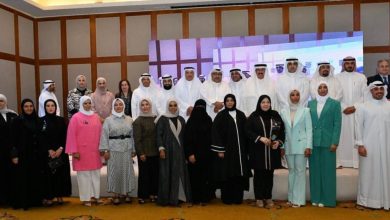Dr. Faten Yousef Al Jabsheh write :DISPARITY IN THE EDUCATION CURVE

DISPARITY IN THE EDUCATION CURVE
As we are preparing for a new school year in the midst of the COVID19 pandemic that has tested the global resilience of our health care systems, economies and human psychology, we are coming to terms with a new challenge, maybe a new reality. How are we going to flatten the, what I have termed, the Education Curve to be more inclusive?
Some countries have opted to resume education online in order to safeguard their children’s health and keep risks at a minimum in light of prospects of a second COVID19 wave without a cure or a vaccine. While others have opted for a hybrid format, combining both types of education, the traditional in the classroom way together with an online system, and some have opted for a total online system, preparing pupils and their parents and teachers for a new way of interaction and learning. The second and third options are tricky because they are in fact pre-determined options, based on each country’s general economic and non-economic indicators that not only reflect wealth, but digital infrastructure and internet connectivity and coverage on a macro-level, and the preparedness of students to have already possessed a personal computer or some other digital device that would enable them to be educated online. More and more developing countries will find themselves left with one viable option, namely the traditional in class education system or a mass televised public broadcast, because their facilitation to go online is extremely limited and not an option. Moreover, in many developing countries access to electricity is lagging, especially in rural areas. Countries like India, Egypt, and many others, where 67.2% in the case of India and 57.3% in the case of Egypt’s total populations live in rural areas, will not be able to adopt online learning as an option. The low internet penetration rate and slow broadband internet speed that low-income developing countries in general are disadvantaged with, pose overwhelming obstacles to online learning, education and any digital activity today.
In 2020, technology, viable internet connectivity and knowledge in use of technology have suddenly become an imperative, an absolute life skill and communication requirement and not an option anymore. Basic livelihood needs, such as health and education have become largely dependent on technology and connectivity in the midst of the largest scale global experiment in the history of humankind where social distance is the norm, where meeting, learning and working face to face is compromised. This has already disadvantaged many groups in society, not only students of all ages but the elderly that are not necessarily tech savvy, in addition to the lower income groups in society that don’t have access to internet based technology and/or knowledge of use. So a new type of ignorance has emerged, that prior to 2020 were not immensely disadvantaged. They were still integrated in mainstream life. With the realities of the current pandemic, new rules, new tools and new ways are now center stage and so are new opportunities.
The technology gap has revealed over the last three quarters of 2020 many discrepancies in the quality of life and in the current and future opportunities of people living in many parts of the world. Investing in technology infrastructure and technology education for all ages and groups in society is now an urgent call for inclusive development, not only in education but also in all facets of life.






